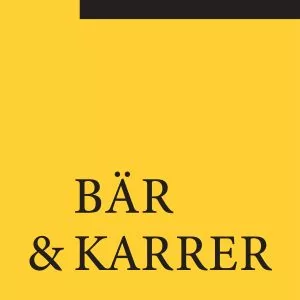Introduction
In the past year, the Swiss Supreme Court (SSC) rendered noteworthy decisions clarifying fundamental questions in Swiss trade mark law, inter alia, relating to the three-dimensional trade mark protecting the Lindt golden bunny and the standard of proof for acquired distinctiveness (SSC decision of 30 August 2022, 4A 587/2021), as well as the misleading and indistinctive nature of event trade marks (SSC decision of 6 April 2022, 4A 518/2021 and 4A 526/2021).
In terms of legislative developments, Germany gave notice to terminate a bilateral treaty with Switzerland with effect of 31 May 2022, ending the mutual recognition of trade mark use occurring on the other signatory party?s territory that had formed a privilege for trade mark holders in the Swiss and German jurisdictions for over 100 years.
Lastly, the Federal Intellectual Property Institute (IPI) decided to lower its trade mark registration fees according to a gradual fee reduction schedule beginning on 1 July 2023.
Golden Bunnies – Acquired Distinctiveness of Lindt's 3D Trade Mark
In a noteworthy decision, the SSC confirmed the trade mark protection of Lindt & Sprüngli AG?s iconic tin foil-wrapped chocolate bunnies (SSC decision of 30 August 2022, 4A 587/2021). Its decision essentially dealt with two questions: the standard of proof for an acquired distinctiveness and the likelihood of confusion with non-colour-coded 3D trade marks.
Background
Lindt & Sprüngli AG ("Lindt") had filed a lawsuit against Lidl Schweiz AG and Lidl Schweiz DL AG (collectively "Lidl") based on two three-dimensional trade marks, one in greyscale without colour claims, and one with colour claims, ie, the gold-coloured foil wrapping and the red ribbon. In its suit, Lindt requested an injunction banning sales and ordering the destruction of Lidl?s chocolate bunnies, irrespective of their colour. While the lower court had dismissed Lindt?s claims, the SSC decided in favour of Lindt and remanded the matter to the lower court.
Surveys Commissioned by a Party as Proof of Acquired Distinctiveness
Like other types of trade marks, three-dimensional trade marks are in principle excluded from trade mark protection if they belong to the public domain, including for lacking inherent distinctiveness. A shape lacking inherent distinctiveness can however acquire distinctiveness and an according trade mark protection through use. A mark is considered having acquired distinctiveness if it is understood by a significant part of the relevant target group as a distinctive reference to a certain undertaking. Distinctiveness can issue from facts evidencing an association by the public of the sign with a specific undertaking, including, significant sales made under a sign over several years or extensive advertising efforts. It can also be established by conducting representative surveys.
In several instances of its reasoning, the SSC reaffirmed prior decisions emphasising surveys as the most effective and favourable means of establishing proof. According to the SSC, a survey conducted according to scientifically sound methodology is suitable to prove an acquired distinctiveness, even if it was commissioned by a party to the proceeding and not by a court-appointed expert. The Court qualified the survey results as documentary evidence and held that questions regarding the survey?s methodology and impartiality of the authors were subject to the Court?s freedom of appreciation. Consequently, the SSC admitted a survey conducted by a third party related to Lindt representatives and introduced into the proceedings by Lindt as proof of acquired distinctiveness.
Interestingly, in an obiter dictum, the Court also accepted the acquired distinctiveness of the Lindt bunny as being notoriously known to the Court and not requiring proof.
Likelihood of confusion with greyscale 3D shape
As to a likelihood of confusion created by the Lidl bunny, the SSC held that – while the Lindt and Lidl bunnies differed in the colour and design of the pendant, their posture, paws and facial expression – the essential features dominating in the consumer recollection were identical, notably a stylised, compact bunny sitting on all four paws, with a ribbon, a pendant, a stern look, few facial features, broad and slightly slanted ears and smooth-surfaced wrappings.
The Court further concluded there was a risk of confusion of Lidl bunnies in all colour combinations based on the Court?s admission of acquired distinctiveness of Lindt?s non-colour-coded greyscale trade mark.
The decision has been questioned, in particular due to its broad protection of Lindt?s greyscale mark, effectively prohibiting chocolate bunnies of similar design in all colour patterns, including red-eyed green bunnies or green-eyed red bunnies, without requiring proof evidencing that consumers attribute all such coloured chocolate bunnies to Lindt, or addressing to what extent competitors must be free to sell chocolate bunnies sitting on all fours for Easter.
Qatar World Cup 2022 – Misleading and Descriptive Nature of Event Marks
In a decision relating to trade mark applications filed in the name of Puma SE ("Puma") and in the name of the Fédération International de Football Association (FIFA), the SSC took the occasion to clarify the requirements for event marks (SSC decision of 6 April 2022, 4A 518/2021 and 4A 526/2021).
Background
Having filed an application for word and figurative marks containing the elements "Qatar 2022" and "World Cup 2022", FIFA, inter alia, requested the cancellation of Puma?s trade marks composed of the word sequence "Puma World Cup Qatar 2022" and "Puma World Cup 2022" before the commercial court of Zurich. In turn, Puma filed a counteraction requesting the cancellation of FIFA?s trade marks. The lower court dismissed both actions and upheld all registrations.
Descriptive nature despite graphic elements and misleading attribution of sponsorship
On appeal, the SSC ruled that FIFA?s word and figurative marks lacked distinctiveness due to their descriptive nature. The figurative elements containing a stylised soccer ball were insufficient to form a distinctive character. The Court concluded that the word and figurative elements belonged to the public domain and that the trade mark registrations were thus incompatible under Article 2(a) of the Federal Trade Mark Protection Act (TmPA).
As to Puma?s trade marks, the SSC held that Puma?s trade marks were misleading and therefore contrary to Article 2(c) TmPA. The combination of elements composing the Puma trade mark were likely to create a risk of misleading relevant consumer targets. Consumers would be susceptible to wrongly assume a special relationship existed between Puma and the football World Cup organisation, and wrongly conclude that Puma was the main sponsor, privileged supplier or comprehensive outfitter of the 2022 World Cup.
Trade Mark Use in Germany no Longer Qualifying as Use in Switzerland
As in other jurisdictions, the use of a trade mark is a requirement for maintaining its validity and enforceability under Swiss law. In principle, such use must take place in Switzerland.
However, up until 31 May 2022, under Article 5 of a treaty between Switzerland and Germany concluded in 1892 (the "Treaty"), the use of a trade mark in Germany had been deemed sufficient to maintain the validity and enforceability of the corresponding Swiss trade mark and vice versa.
Following a decision of the European Court of Justice (CJEU) of 22 October 2020 (C-720/18 and C-721/18 – Testarossa), Germany gave notice to terminate the Treaty in December 2021. The CJEU had held that the Treaty was incompatible with European law (ie, Directive (EU) 2015/2436 to approximate the laws of the Member States relating to trade marks). The termination of the Treaty took effect on 31 May 2022.
The IPI has since communicated that the Treaty will remain applicable in all opposition proceedings in which non-use is alleged, as well as in all cancellation proceedings due to non-use for all periods of use preceding the termination of the Treaty. By contrast, evidence relating to a use that occurred in Germany after 31 May 2022 will no longer suffice.
Reduction of IPI Registration Fees
Thanks to its favourable finances, the IPI will reduce its fee schedule gradually as follows: from 1 July 2023, the trade mark registration fees for three classes of goods and services will be reduced from CHF550 to CHF450. Likewise, the individual fees for the protection of an international trade mark in Switzerland in three classes of goods and services will be reduced by CHF50. Further, the IPI will grant a rebate of CHF100 for registration applications submitted electronically. From 1 July 2024, the fees for extending the validity of a trade mark will be reduced from CHF700 to CHF650
Originally published by Chambers Global Practice Guides, 2023, Chambers & Partners.
The content of this article is intended to provide a general guide to the subject matter. Specialist advice should be sought about your specific circumstances.


